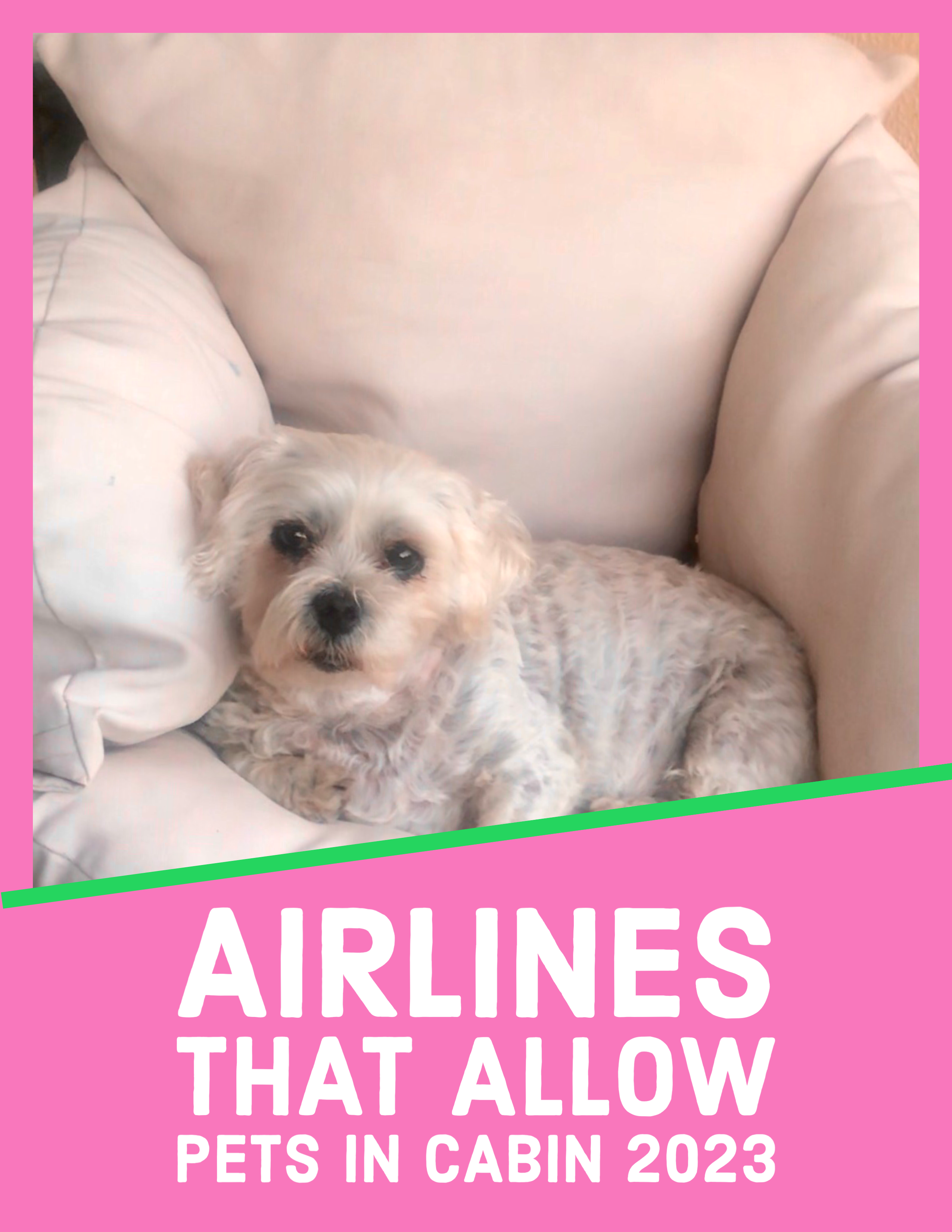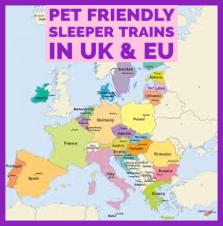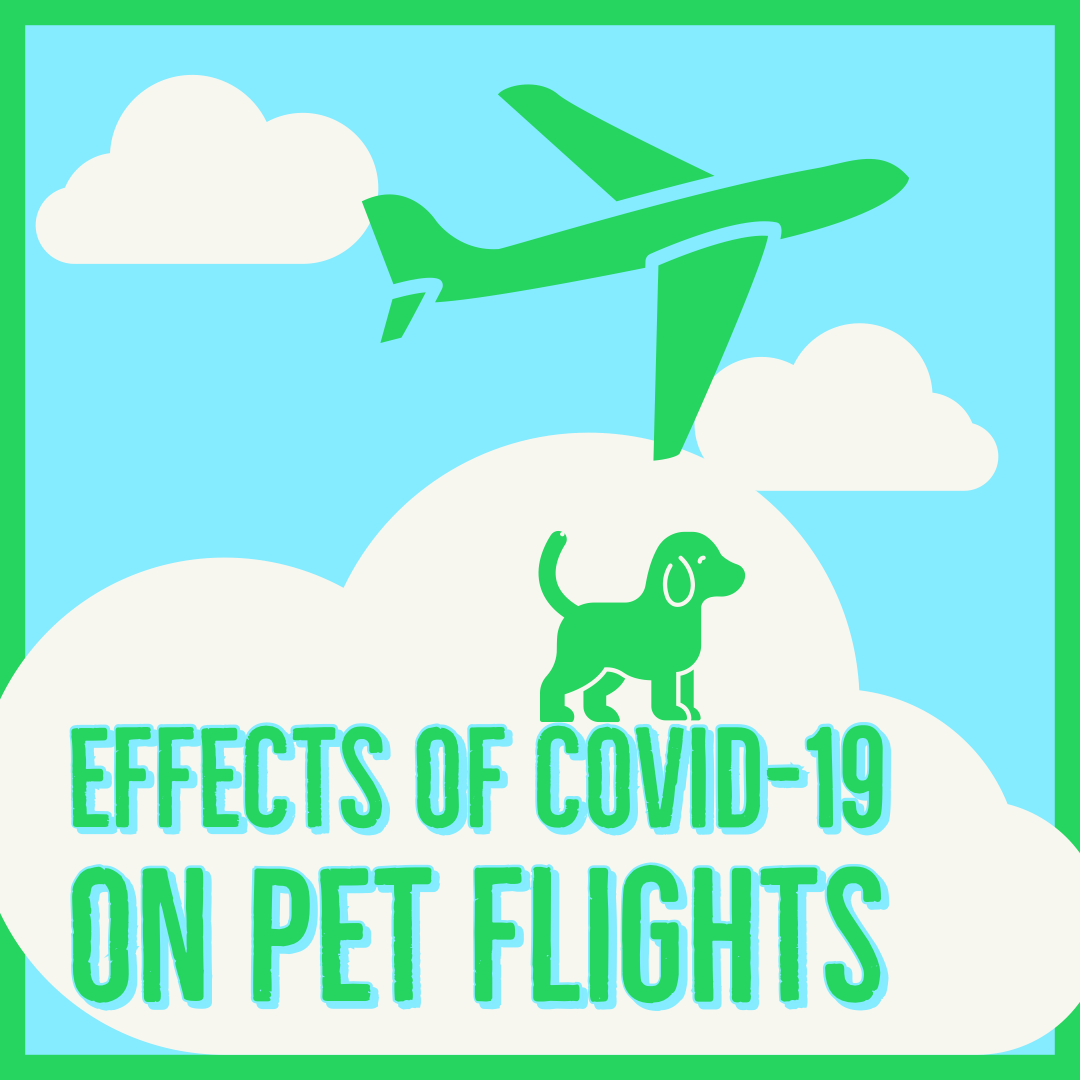Whether you’re a regular pet traveller, or it’s your first time flying with your cat or dog, we guarantee you feel a bit on edge. Airline pet safety on planes is probably the most common traveller concern. Even when taking your furry friend in the passenger cabin, flying at your feet under the seat in front, we bet you still worry! Is she hungry? Is he scared? Does she have any idea what’s happening?! But, if your cat or dog is flying in the aircraft hold as checked baggage or cargo, your anxiety is probably escalated tenfold. One of the most common fears associated with flying with a pet is safety concerns whilst they’re transported in the hold. However the International Air Transport Association (IATA) aims to ensure that all live animals, whether human or otherwise, fly in a safe, comfortable, secure environment. Of course, despite the Live Animal Regulations (LAR) enforced by the IATA, accidents can still occur. So, just how safe are our dear pets on planes?
Estimated reading time: 7 minutes
Table of contents
Laws Regulating Pet Safety on Planes
The safety of pets, and all live animals travelling on planes, is overseen by the International Air Transport Association (IATA). In addition, the IATA governs the wellbeing, safety and security of humans. To ensure pet safety while travelling by air, airlines, animal cargo couriers and pet owners have to abide by the IATA Live Animal Regulations (LAR).
The LAR defines the measures that must be taken to keep animals pets free from harm, and includes the:
- Minimum inner space permitted in the airline pet travel crate, based on the size of your cat or dog
- Minimum age allowed for cats and dogs travelling by air (10 weeks)
- Pet handler responsibilities when transporting animals on a plane
Recent Pet Friendly Airline Policy Safety Changes
As the IATA governs airline policies with regards to pet health and safety, airlines have a duty to practice pet safety first.
In recent years, pet travel safety issues have resulted in changes to policies. For example, snub nosed breeds of cats and dogs aren’t allowed by ethical airlines to fly in the hold of a plane. This change was due to the increased number of fatalities of these species when flying in the hold. As a result, ethical pet friendly airlines no longer allow snub nosed cats and dogs to fly in the aircraft hold.
So, can we really be certain our cats, dogs, and other pets when flying in the hold as checked baggage or cargo?
Airline Pet Incidences
Since 2005, the US Department of Transport (USDoT) has required all airlines to report incidents involving pets. You can view the most recent findings on the USDoT website.
USDoT then calculates the airlines incidence rate per 10,000 animals carried, in relation to pet injury, death or loss.
Some of the key findings of the USDoT airline pet safetey analysis show:
- Alaska Airlines transported 107,042 animals in 2020, more than any other carrier, with zero reported incidents that year. In fact, from January 2015 to December 2020, Alaska Airlines transported the highest volume of pets with all airlines. Over 730,000 animals flew with Alaska Airlines over this period, while maintaining an average incident rate of 0.26%.
- Other airlines that transported over 10,000 animals in 2020, whilst maintaining a zero incident rate, include Horizon Air (branch of Alaska), Skywest Airlines, and Envoy Air.
- Since 2015, Horizon Air has transported over 130,000 animals and has maintained a 0% incident rate every year through 2020.
- In contrast to the top pet friendly airlines in 2020, Hawaiian Airlines claimed the highest pet incidence rate at 2.15% for the 9,302 animals transported.
- Second was Delta Airlines with a 1.06% Incident Rate from18,934 animals.
- Third place went to United Airlines due to an incident rate of 0.99% across 10,152 animals.
Incidents reflected within those rates, according to the USoOT, include death, injury, or loss of a pet. Each percentage listed was calculated by the USDoT based on the number of incidents per 10,000 animals transported.
Choosing a Pet Friendly Airline
It can be daunting locating a pet friendly airline that travels on your desired route. But, what do you do when you’re travelling without your pet? Well, we guess you check out reviews first! That’s why we’re building a directory of airlines, destinations, hotels and more, that’s purely focused on the pet side of things. So, when checking out reviews on our website, you’ll know that they only relate to pet friendliness – after all, there’s plenty of review websites for us humans!
Before making a decision, have a look at reviews on our site by other pet travellers for your chosen airline. And remember to leave your own opinions too, to help others make informed choices when flying with their fur-balls. If you can’t find your favourite pet friendly place in our directory, you can add it in less than 60 seconds!
Purchasing a Safe Airline Pet Travel Crate
One of the most effective ways to keep your pet protected while travelling by air is to use a good quality airline kennel. Primarily, when purchasing an airline travel crate for your cat or dog, you have to calculate the minimum IATA approved inner dimensions. Just measure your pet and use the formula to decipher how much inner space the pet travel crate must provide. With pet safety and comfort in mind, these inner kennel dimensions are the absolute minimum the IATA allows for a pet with these dimensions to fly.
Now, you can use these dimensions to check if your pet can travel with your chosen airline. Each pet friendly airline stipulates the maximum pet carrier dimensions for transport in the cabin or hold. From here, you’ll know:
- The minimum IATA approved inner pet crate dimensions
- The maximum dimensions the airline allows in the cabin and in the hold as checked baggage or cargo
Therefore, you’ll now understand if your pet can fly in the cabin or hold while using the IATA minimum crate dimensions together with the airline maximum dimensions.
Obviously, it’s safer for cats and dogs to travel in the cabin alongside their owner. Unfortunately, most pets are too big to meet the size and weight criteria to fly in the passenger cabin. For instance, the only Labradors you’ll see flying in the cabin are Assistance & Service Dogs!
Passing through Airport Security
When your cat or dog is travelling in the hold, they won’t pass through airport security with you, as you’ll check them in at the airline or cargo desk. But, for pets flying in the cabin with you, the pet travel carrier will be x-rayed at passenger security.
So, to protect your pet from harmful rays, the airport security staff will ask you to remove your pet from their carrier. But what if you’re flying with birds or fish in the cabin? Or a cat, since many are apprehensive in new situations, and may make an escape? In these cases, you can ask for a separate screening for your pet.
Otherwise, if your pet can be leashed, or will stay in your arms when removed from the carrier, you’ll just take them out and pass through security. If your pet is wearing a metal collar or harness, you may be asked to remove this first, the same way you often have to remove your own jewellery or watch.
Minimising Disruption to Animals in the Hold
Many pet friendly airlines and animal cargo couriers operate a “last on, first off’ policy for pets flying in the aircraft hold. This means that your cat, dog or other pet will board the plane once all passengers have taken their seats. Doing so avoids your pet being stressed by the noise and disruption. Similarly, upon landing, pets are dis-embarked from the aircraft before passengers.
In order to guarantee hold of the plane is a temperature controlled environment. Basically, the way all dogs cool themselves is through respiration, either just panting or the action of breathing in or out. This is a method of heat exchange for them, so the temperature in the hold must be controlled to maintain a safe environment for animals.
While the safety of pets can’t be guaranteed when travelling by air, the same can be said for humans. But, there are steps you can take such as selecting a recommended airline, and purchasing a good quality pet travel crate. And always speak to your airline or pet cargo courier about any safety concerns on your mind.
Check out our 8 Essential Pet Travel Accessories, and Ultimate Pet Travel Checklist for more suggestions to help your cat or dog travel in comfort. If your cat or dog tends to get travel sick, also have a look at our Pet Travel Sickness Remedies.






